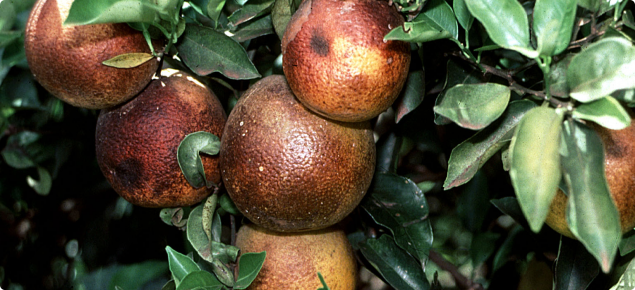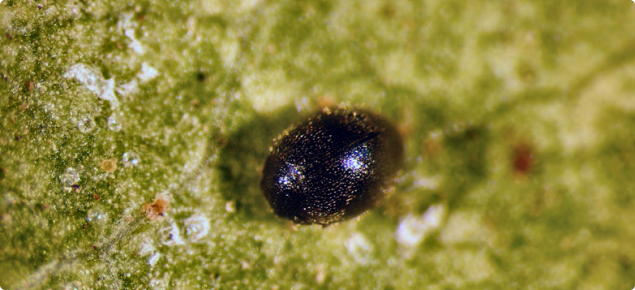Damage
Mites cause damage by sucking the cell contents from buds, leaves and fruit. On leaves, feeding damage results in stippling (light dots) which can sometimes take on a bronze color. Mites generally prefer to feed on young, flushing leaves, but if infestations are severe, they will also feed on older leaves. Leaf drop can occur through mite feeding and although this does not usually result in yield loss during the year of infestation (unless it occurs in spring or early summer), it can impact on the following year’s crop.
Symptoms of mite damage to fruit vary. Rust mites 'bronze' the skin of mature oranges, while broad mite causes 'shark-skin' to form on limes and lemons. Bud mite damage can deform lemons.



